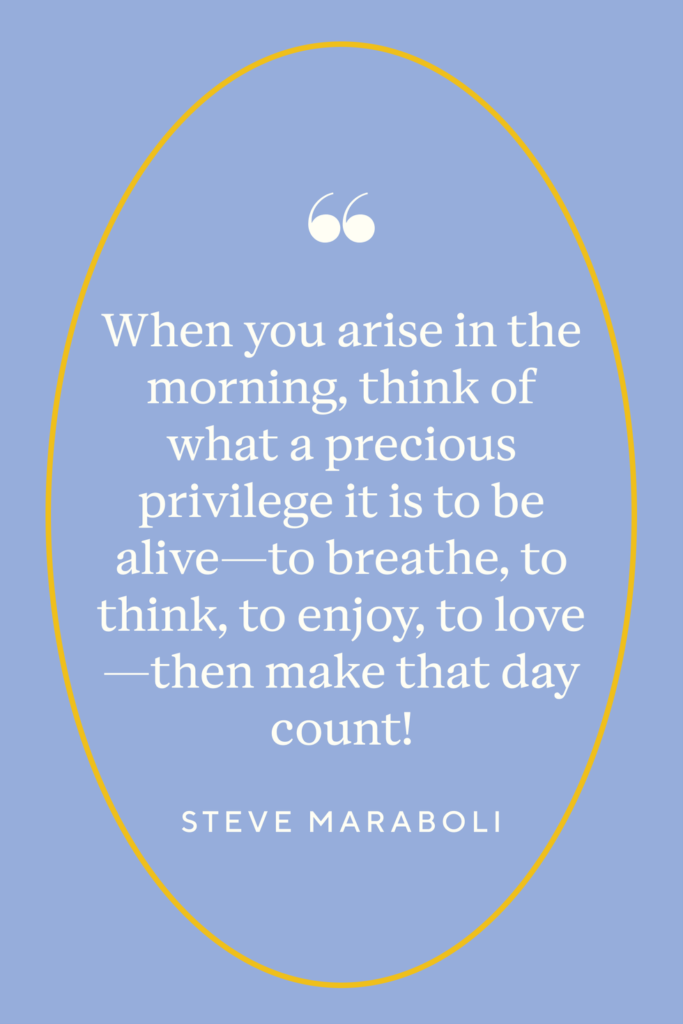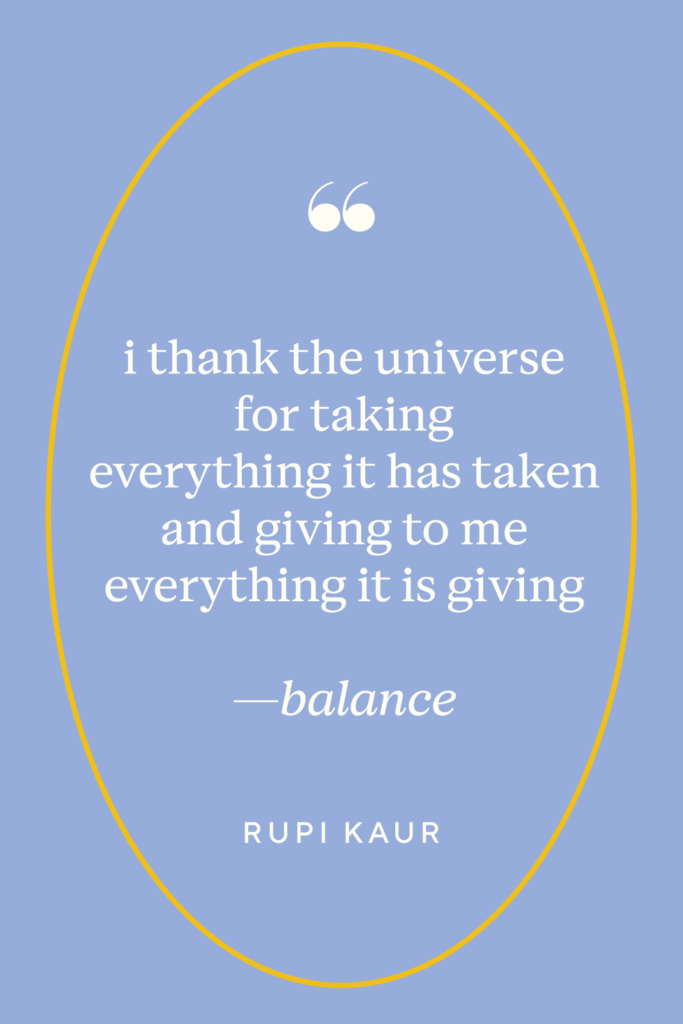Gratitude turns what little you have into abundance.
Gratitude is so much more than saying thank you.
Gratitude changes your perspective of your world.
Throughout history and around the world, religious leaders and philosophers have extolled the virtue of gratitude. Some have even described gratitude as “social glue” that fortifies relationships—between friends, family, and romantic partners—and serves as the backbone of human society. But what exactly is gratitude? Where does it come from? Why do some people seem to be naturally more grateful than others? And are there ways we can foster more feelings and expressions of gratitude? Over the past two decades scientists have made great strides toward understanding the biological roots of gratitude, the various benefits that accompany gratitude, and the ways that people can cultivate feelings of gratitude in their day-to-day lives.

What Is Gratitude?
Most people have an instinctive understanding of what gratitude is, but it can be surprisingly difficult to define. Is it an emotion? A virtue? A behavior? Indeed, gratitude can mean different things to different people in different contexts. However, researchers have developed some frameworks for conceptualizing gratitude so that it can be studied scientifically. For example, Robert Emmons and Michael McCullough define gratitude as a two-step process: 1) “recognizing that one has obtained a positive outcome” and 2) “recognizing that there is an external source for this positive outcome.” While most of these positive benefits come from other people—hence gratitude’s reputation as an “other-oriented” emotion—people can also experience gratitude toward God, fate, nature, etc. Some psychologists further categorize three types of gratitude: gratitude as an “affective trait” (one’s overall tendency to have a grateful disposition), a mood (daily fluctuations in overall gratitude), and an emotion (a more temporary feeling of gratitude that one may feel after receiving a gift or a favor from someone). Most of the studies in this paper focus on trait (or “dispositional” gratitude) and/or gratitude as an emotion.
But yet you wonder how you can find the positive when everything seems so bleak? Read on to learn how to identify the positive when it seems there is nothing to be grateful for. We’ll also explain the importance of gratitude, how to show it to others, and share gratitude and appreciation videos.
What is Gratitude – Its Meaning & Definition
Defining Gratitude Religious traditions including Judaism, Christianity, Islam, Buddhism, and Hinduism all encourage cultivating gratitude as an important moral virtue. For millennia, gratitude has been a popular topic among philosophers:
• Cicero said gratitude “is not only the greatest one but also the mother of all the other remaining virtues”;
• Seneca “ranked ingrates below thieves, rapists and adulterers”;
• Hume wrote, “Of all crimes that human creatures are capable of committing, the most horrid and unnatural is ingratitude”;
• and Adam Smith believed that gratitude was vital for maintaining a society based on goodwill (Emmons & Crumpler, 2000) [484], (McCullough, Kilpatrick, Emmons, & Larson, 2001) [1134], (Manela, 2015).
Gratitude is an emotion similar to appreciation. The American Psychological Association (n.d.) more specifically defines this phenomenon as a sense of happiness and thankfulness in response to a fortunate happenstance or tangible gift.
Gratitude is both a state and a trait (Jans-Beken et al., 2020). Better explained, one can experience gratitude for someone or something at a certain moment in time, and someone experience gratitude more long-term as a positive character trait.
According to Dr. Robert Emmons, the feeling of gratitude involves two stages (Emmons & McCullough, 2003):
First comes the acknowledgment of goodness in one’s life. In a state of gratitude, we say yes to life. We affirm that, all in all, life is good and has elements that make it worth living. The acknowledgment that we have received something gratifies us, both by its presence and by the effort the giver put into choosing it.
Second, gratitude is recognizing that sources of this goodness lie outside the self. One can be grateful to our creator, other people, animals, and the world, but not to oneself. At this stage, we recognize the goodness in our lives and who to thank for it.
The two stages of gratitude comprise the recognition of the goodness in our lives and then how this goodness came to us. Through this process, we recognize the fortune of everything that improves our lives and ourselves.
Further, gratitude can be considered either a dispositional trait or a state of being.
As a trait, an individual practices gratitude as part of their daily life (McCullough et al., 2002), and it is considered a character strength. It is important to remember that gratitude is a strength that can be enhanced with awareness and practice.
When a person experiences the emotion from someone expressing gratitude for them, it is referred to as a state (Watkins et al., 2009).

The science of gratitude
Gratitude and the brain
A handful of neuroimaging studies have shed light on brain areas that are likely involved in experiencing and expressing gratitude. One functional magnetic resonance imaging (fMRI) study found that experiencing emotions involved in maintaining social values, such as pride and gratitude, activated areas in the mesolimbic and basal forebrain, regions involved in feelings of reward and the formation of social bonds (Zahn et al., 2009) [234]. A follow-up study found that people who more readily experience gratitude have more gray matter in their right inferior temporal cortex, an area previously linked to interpreting other people’s intentions (Zahn, Garrido, Moll, & Grafman, 2014) [19].
Two decades ago, a landmark study led by the psychologist Robert A. Emmons sought to understand how people benefit from gratitude, a question that scientists had rarely explored until then.
Gratitude & Positive Psychology – What is the Connection?
As we already know, positive psychology focuses on positive thoughts and behaviors. Its constructs include optimism, hope, and, you guessed it – gratitude (Iodice et al., 2021).
As part of Seligman’s PERMA model, which includes positive emotion, engagement, relationships, meaning, and achievement, a key positive emotion includes gratitude (Lianov, 2021).
Robert Emmons has led positive psychology’s expansion of research on the importance of gratitude. Emmons has authored several papers on the psychology of gratitude, showing that being more grateful can lead to increased levels of wellbeing (Emmons & Crumpler, 2000).
Some of Emmons’s work has also specifically dealt with gratitude in a religious setting, highlighting how gratitude towards a higher power may lead to increased physical health (Krause et al., 2015). There will be more on gratitude and religion later.
These detailed, science-based exercises will equip you or your clients with tools to build daily gratitude habits, express more appreciation toward others, and experience more positive emotions in everyday life.
Dr. Emmons’s findings — which suggested that gratitude may improve psychological well-being — inspired a spate of additional research. To date, numerous studies have found that having a grateful outlook, “counting one’s blessings” and expressing gratitude to others can have positive effects on our emotional health as well as on interpersonal and romantic relationships.
In addition, some studies, but not all, have shown that gratitude can benefit physical health.
“Gratitude heals, energizes and changes lives,” Dr. Emmons said. “It is the prism through which we view life in terms of gifts, givers, goodness and grace.”
Here’s more about why gratitude is so powerful, and how can we incorporate it into our daily lives.
Why Is It Important to Be Grateful?
Passmore and Oades (2016) assert that as expectations have changed, gratitude has diminished in western society. Possessions and health are expectations for many individuals rather than considered personal ‘blessings’ that are appreciated. “Gratitude has, for many, been replaced by disappointment, anger, and resentment when these expected ‘blessings’ either do not appear or they disappear” (Passmore & Oades, 2016, p. 43).
We have learned gratitude helps people focus on the positive aspects of their life. Gratitude can help build and maintain relationships with others, resulting in hope, life satisfaction, and more proactive behaviors toward others (Passmore & Oades, 2016).
If you still aren’t convinced, you may wish to pick up one of the books suggested in our Gratitude Books article.
The Importance of Gratitude in Life

Gratitude is strongly related to wellbeing (Jans-Beken et al., 2020; Wood et al., 2010). The positive effects of experiencing and expressing gratitude are endless.
Gratitude has been found to be beneficially associated with social wellbeing, emotional wellbeing, and psychological wellbeing (Jans-Beken et al., 2020). It is no surprise that trait gratitude is an important “predictor of wellbeing and other desirable life outcomes” (Portocarrero et al., 2020, p. 6).
Gratitude appears to have a domino effect. If a person experiences gratitude, they are more likely to recognize the help and then later reciprocate that help (Wood et al., 2010). People who are thanked are presumably more apt to extend help to others in the future.
Likewise, people who are not thanked may not be expected to provide reciprocation in the future. The expression of gratitude is beneficial for both individuals and society (Bono et al., 2004).
Further, gratitude is an element in many religions. For example (Passmore & Oades, 2016),
- Buddhism – Gratitude is indicative of the concept of dependent origination, which implies that everything is interconnected. For Buddhists, awareness of our interdependent and interconnected existence evokes gratitude for the web of life that sustains us.
- Judaism – Individuals practicing Judaism may start the day with Modeh Ani, a short Hebrew blessing thanking God for life.
- Christianity – Christians denote gratitude to God by stating blessings. These blessings are said in a prayer form and are created for food, family, life, and any other blessings that God may grant.
As if you needed any more convincing, in a review of the literature, Cregg and Cheavens (2021) found that gratitude has a positive affiliation with positive affect, life satisfaction, extraversion, forgiveness, and a negative affiliation with substance abuse and neuroticism, as well as an inverse relationship between gratitude and anxiety and depression.
THE ICEBERG OF GRATITUDE
What exactly is gratitude, and how can we experience more of it daily?
Gratitude is the act of recognizing and acknowledging the good things that happen, resulting in a state of appreciation (Sansone & Sansone, 2010).
Often when we consider what we are grateful for, overt and profound life experiences, circumstances, and events come to mind. We may feel grateful for our upbringing, family, job, good health, and the opportunity to gain an education. While recognizing and being grateful for these experiences is important, our gratitude practice must also venture below the surface.
Below the surface, we find the simple, everyday pleasures that often go unnoticed. This may be a great book we read, laughter with a friend, or even the joy of eating ice cream in the sunshine. Whatever these simple pleasures may be, consciously expressing our gratitude for them can help us grow our daily gratitude practice beyond the surface level.
The Importance of Thanksgiving
If you are from North America, then cornucopia, turkey, Pilgrims, and Native Americans may come to mind when you mention the word ‘Thanksgiving.’ Thanksgiving is more broadly explained as a day to give thanks. Countries such as Grenada, Saint Lucia, and Liberia also celebrate Thanksgiving, while countries like Brazil and the Philippines celebrate it unofficially (Vicens, 2022).
The Netherlander town of Leiden and the Australian territory of Norfolk Island also celebrate this holiday (Vicens, 2022). Similarly, Germany, the United Kingdom, and Japan celebrate a fall harvest, where people also give thanks.
So why is there an entire holiday created for giving thanks?
For many, “Thanksgiving is a collective ritual that celebrates material abundance through feasting.” (Wallendorf & Arnould, 1991, p. 13). Thanksgiving is important because it is a designated time assigned to encourage us to pause to be mindful of the blessings we have. Many of us get so caught up in our day-to-day routines that we fail to stop and acknowledge our fortunes.
To demonstrate and celebrate gratitude, you don’t need a particular holiday to show thankfulness. Conveying gratitude should be practiced daily.

How to Show Gratitude and Appreciation
Gratitude can be demonstrated in many ways. It can be shown with merely a simple, verbal “thank you” or it can be indicated by a more elaborate practice, such as the strategies detailed below.
To improve your gratitude, reflect on how better you can show your appreciation to others. When verbally expressing gratitude to someone, consider reflecting on your emotions and on the effort involved.
References
The Science of Gratitude. A white paper prepared for the John Templeton Foundation by the Greater Good Science Center at UC Berkeley May 2018